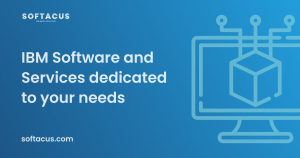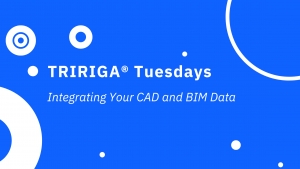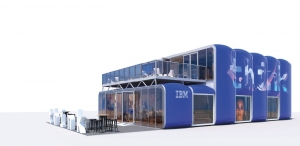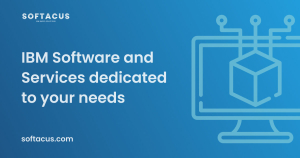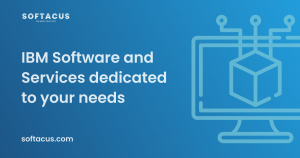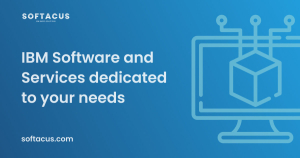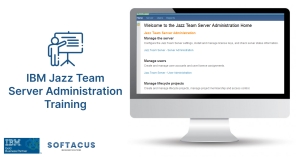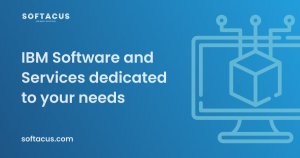Displaying items by tag: ibm
Oct 21, 2021 from 10:00 AM to 11:00 AM (PT)
See reports created to analyze data and relationships across the Engineering Lifecycle Management tools (DOORS Next, Engineering Test Management,and Engineering Workflow Management). You’ll also see report results exported to spreadsheets and added to the dashboard.
IBM Engineering Lifecycle Management (ELM) is the leading platform for today’s complex product and software development. ELM extends the functionality of standard ALM tools, providing an integrated, end-to-end solution that offers full transparency and traceability across all engineering data. From requirements through testing and deployment, ELM optimizes collaboration and communication across all stakeholders, improving decision- making, productivity and overall product quality.
Speakers

Jim Herron
CTO and IBM Certified Partner for IBM
Island Training
Chief Technical Officer of Island Training. Certified IBM Business Partner and Official IBM Champion.
Oct 5, 2021 from 11:00 AM to 12:00 PM (ET)
Join us as we recognize Cognos Analytics as a member of the Watson portfolio. Hear from IBM AI leaders on why we invest in Cognos, and what the AI and predictive vision is for the product coming out of the Watson research labs. Hear more about the most recent and upcoming product releases, as well as how customers are using AI features within Cognos today. We can’t wait to see you there!

Keri Olson, Director, Product Management, IBM Data and AI
Seth Dobrin, IBM Chief AI Officer
Gandhi Sivakumar, Distinguished Engineer, Master Inventor, VP for AoT (Data&AI)
Rachel Su, Senior Product Manager, Cognos Analytics
Martin Phillips, Senior Product Manager, Cloud and Cognitive Software
26. October 2021
Our most-requested topic! In this TRIRIGA Tuesday session we will cover integrating, publishing, and reporting on CAD and BIM information in TRIRIGA. This session will provide an introduction to populating space portfolio information and graphics in TRIRIGA using CAD or BIM. Learn about the latest enhancements to CAD Integrator/Publisher and IBM TRIRIGA Connector for BIM, as well as use cases for each. IBM® TRIRIGA® offers add-in products for computer-aided design (CAD) and building information modeling (BIM) applications. You can load data from your CAD or BIM applications into TRIRIGA records and show the data as graphics in TRIRIGA applications.
- You can use IBM TRIRIGA CAD Integrator/Publisher to integrate your computer-aided design (CAD) applications with the IBM TRIRIGA environment. You can attach and upload CAD drawing data to TRIRIGA records, and view real-time information for that data in your CAD application reporting. The publication process uploads a .dxf file representation of CAD drawings to the TRIRIGA server where the .dxf files are processed for display as web graphics in the TRIRIGA environment.
- You use IBM TRIRIGA Connector for BIM to link Autodesk Revit model data with TRIRIGA records, synchronize the linked data, and publish graphic representations of Revit floor plans for use in TRIRIGA applications. TRIRIGA users, such as space planners, can view Revit project elements, such as floor plans, in the Graphics sections of the TRIRIGA applications that they use.
Location
Online Instructions:
Url: http://event.on24.com/wcc/r/3428176/5D794F9BA0C43145F1718DD6421C196D
September 8, 2021, IBM Think Pop-up, Königsplatz, Munich
Compliance, automation, and quality assurance in the automotive industry. The IBM Innovations-Treff at the IAA offers short, concise insights into current technology topics for decision-makers who are driving the automotive industry forward: engineering, traceability, German Edge Cloud in production.
What can you expect?
Compliance in automotive engineering
Learn more about IBM Engineering Lifecycle Management (ELM) - the leading platform for complex product and software development.
You can find more information about ELM here
Blockchain in the automotive industry
Use the case study at Renault to learn how IBM Blockchain can be used to exchange data reliably and work across borders with partners and customers.
Speakers
Ruben Rex
Harald Robok
Bernd Kremer
Eduard Erhart
Peter Schedl
Agenda
We look forward to welcoming you to the live stream of the IBM Innovations-Treff live from the Think Pop-up on Königsplatz as part of the IAA Mobility 2021! If you are interested in on-site participation, please feel free to contact This email address is being protected from spambots. You need JavaScript enabled to view it..
10:00 - 10:10
The automotive industry in motion
10:10 am - 10:30 am
Compliance in automotive engineering
10:30 am - 10:50 am
Blockchain - The digital handshake quality for customers and partners
10:50 - 11:00
Break
11:00 am - 11:20 am
Quality assurance in production - visual inspection
11:20 - 11:40
Hybrid cloud solutions for automotive production with German Edge Cloud (GEC)
11:40 am - 11:45 am
Closing words
11:45 am - 11:45 am
End of the event
Sep 27, 2021 from 08:00 AM to 11:30 AM (PT)
The IBM Engineering Lifecycle Management Symposium and Open Labs provides opportunities for you to:
Better understand the purpose and capabilities of IBM’s Engineering Lifecycle Management (ELM) solution,
Gain insights regarding the ELM development roadmap,
Identify new ways that you can use ELM to make you more effective on the job, and
Perform hands-on exploration to dive into aspects of ELM that are of particular interest to you.
This event is tailored and customized for Hill Air Force Base and it on base contractors such as Northrop Grumman, Lockheed Martin, SAIC, BAE Systems, etc. The public is also invited to attend the the Symposium of presentations. The Virtual Workshops are reserved for Hill AFB personnel and its contractors.
Event Roadmap
Day 1 – September 28 – participate in the IBM Engineering Lifecycle Management Symposium. The Symposium provides eight illuminating technical sessions regarding ELM foundations, future ELM development plans, and how you can use ELM to accelerate your success in addressing practical systems engineering and software engineering challenges. Question and Answer session to follow each presentation.
Days 2 or 3 – September 29 or 30 – sign up for and participate in one of our 4-hour hands-on Open Labs sessions. You will select and perform one or two of our 25+ Quick Start guided exercises, each of which enables you to use one or more of our ELM tools to perform select use cases. You also will learn how you can later request and use your own personal Cloud-based ELM environment, so that you can further explore ELM by performing other Quick Start exercises that interest you. For registration of the workshops please email Gary Hayes at IBM <This email address is being protected from spambots. You need JavaScript enabled to view it.;. Gary will confirm which session you're registered for. There will be morning and afternoon session on September 29 or 30.
Summary
8:00AM Start: Mark Kovich of IBM - Logistics of Event
8:05AM Opening Remarks: Evan Edwards of Hill Air Force Base
8:10AM Additional Comments of Symposium Workshop: Gary Hayes of IBM
8:15AM ELM and ELM’s Support for Digital Engineering: Sky Matthews of IBM - CTO for ELM
The Digital Engineering (DE) revolution
Introducing OSLC, a DE enabler
9:00AM How ELM and OSLC help enable the DE revolution ELM Investment Themes and Roadmap: William Streit of IBM -Director ELM Offering Management
- ELM’s strategic focus
- ELM Development Roadmap
10:00AM System of Systems Mission Modeling with the Unified Architecture Framework: Eran Gery of IBM - Distinguished Engineer for Aerospace & Defense and MBSE
- Introducing the Unified Architecture Framework (UAF)
- UAF implementation in IBM Rhapsody
- Leveraging the UAF for Mission Modeling
- Integrating UAF and SysML models using Rhapsody Break 1045 Integrating Systems and Safety Modeling
11:00 AM The importance of addressing risks and safety concerns during systems engineering: Eran Gery of IBM - Distinguished Engineer for Aerospace & Defense and MBSE
- Introducing hazard analysis, fault tree analysis (FTA), and failure mode and effect analysis (FEMA)
- Extending SysML with safety modeling
- Integrating systems modeling and risks and safety modeling using Rhapsody
Location
Online Instructions:
Url: http://event.on24.com/wcc/r/3369821/4F60898360585CCDF85EADE4C868DF8C
Duration: 8-16 hours
IBM Jazz Team Server: V 6.0.6+ and V 7.0+
Type: Instructor-led Classroom
Duration: 8-16 hours
Location: remote or onsite
Language: English, Slovak, Czech
Audience: This course is designed for system administrators, enterprise architects, application managers, database managers, and integration engineers.
Prerequisites: Nice-to-have experience (not mandatory)
- Windows Server and Linux administration
- Software installation and configuration
- Database administration (DB2, Oracle, MSSQL)
- Application server administration
- Application monitoring and troubleshooting
- LDAP authentication
- A reverse proxy server configuration
- SSL certificates
Overview
IBM Rational CLM that was recently renamed to IBM ELM since version 7.0+, (IBM Jazz Platform) consists of several interconnected components. The architecture of this platform is complex and it is based on many different technologies. This course provides you with a deeper insight into the architecture of the IBM Jazz platform and its components and integrated applications.
Main Components
- Jazz Team Server
- IBM Engineering Workflow Management (Rational Team Concert)
- IBM Engineering Requirements Management DOORS Next (Rational DOORS Next Generation)
- IBM Engineering Test Management (Rational Quality Manager)
- IBM Engineering Systems Design Rhapsody - Design Manager (Rational Rhapsody Design Manager) - No longer developed, latest version is 6.0.6.1.
- IBM Engineering Systems Design Rhapsody - Model Manager (Rational Rhapsody Model Manager) - From version 7.0+ installed as an extension to EWM.
- IBM Engineering Lifecycle Optimization - Engineering Insights (Rational Engineering Lifecycle Manager)
- IBM Engineering Lifecycle Optimization - Publishing (Rational Publishing Engine Web)
And supporting applications like
- Jazz Reporting Service (Report Builder)
- Global Configuration Management
- Lifecycle Query Engine
- Data Collection Component
- Link Index Provider
- IBM Rational Method Composer WAR files
- Other 3rd Party application
This course gives you knowledge and skills in the installation and configuration of the IBM ELM platform. It also provides you with an insight into the maintenance and upgrade of the system and explains how to troubleshoot raised problems within the platform.
You learn how are the applications connected with each other and how to manage user authentification, authorization, and licensing options.
The creation and connection to the database is explained. The course showcases a deployment of the IBM ELM in the standard environment that consists of a DB2 database and WebSphere Liberty application server.
Objectives
After completing this course, you are able to:
- Understand the architecture of the Jazz platform
- Understand the purpose of each ELM application
- Understand different deployment topologies and their benefits
- Create databases for each application
- Install ELM applications using IBM Installation Manager on both Windows and Linux servers
- Configure different authentication methods (Basic User Registry and LDAP)
- Understand different licensing options and their benefits
- Understand the difference between license deployments
- Set up licensing server, obtain and import licenses
- Connect data sources to reporting application and deploy pre-defined reports
- Create users and set up user roles and licenses
- Troubleshoot applications - log analysis
- Upgrading to new iFixes (same version updates)
- Upgrading to new platform versions
- Tune the performance (JVM)
- Open IBM case in order to solve problems and further questions
Further, We include our "best practices" which we have developed during our installations for various clients, and answer all the questions you might have during the presentation.
Variations
Companies use many different environments and technologies which their infrastructure and system administrators are used. We understand this and We are able to adapt this course based on these technologies and the needs of our clients. If you have any questions or any special requests, please feel free to contact us in order to discuss your proposal.
Contact us to get customized offer for your team. Upon discussion, we can learn you process and include important elements and terms known to your team into the training program.
In Doors NG there are three types of templates - Project Area Template, Module Template, and Artifact Template. All of these templates can be managed on the project administration Templates page.
Config. Management enabled = Manage Component Properties --> Templates --> Component or Artifact Templates (in the left sidebar)
Config. Management disabled= Manage Project Properties --> Templates --> Project or Artifact Templates (in the left sidebar)


